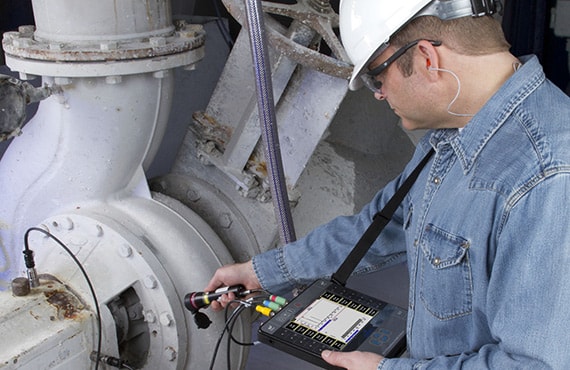EN 149 – Respiratory Protective Device Filtering Half Mask Test
The European Standard EN 149 specifies requirements and tests for filtering facepieces for respiratory protection. This standard is crucial in ensuring the safety of workers exposed to various airborne contaminants, including dust, fumes, mist, or other harmful particles.
EN 149 compliance requires comprehensive testing of the filtering half mask to ensure that it meets stringent performance criteria. The test involves several stages, each designed to evaluate different aspects of the respirator's functionality and safety:
- Airtightness Test: Ensures that the mask forms a good seal around the face, preventing contaminated air from entering.
- Breathing Resistance Test: Measures the resistance to breathing when the filter is loaded with particles. This helps ensure that the respirator does not become excessively burdensome for the wearer.
- Particle Filtration Efficiency Test: The most critical test, which evaluates how effectively the mask filters out harmful particulates. It involves exposing a sample of the mask to various concentrations of test dust and measuring the percentage of particles retained by the filter.
- Bacterial Filtration Efficiency (BFE) Test: This is an optional test that measures the ability of the respirator to block bacteria, ensuring it meets additional protection requirements in certain industries.
- Flame Resistance Test: Ensures the mask can withstand brief exposure to flame without igniting or melting.
The testing process involves rigorous preparation and execution. Specimen preparation requires careful handling of the filters to ensure no contamination before testing. Instrumentation used in these tests includes calibrated manometers, dust generators, and specialized chambers for conducting the filtration efficiency test.
Reporting on the results is critical to ensuring compliance with EN 149 standards. Reports must detail all tests conducted, including their parameters, findings, and any non-compliance issues. Compliance officers and quality managers rely heavily on these reports to ensure that respirators meet the necessary safety and performance criteria.
Industry Applications
The oil & gas sector is particularly reliant on EN 149 compliant respiratory protective devices due to the nature of its operations. Workers often encounter hazardous substances such as hydrocarbons, particulates, and other airborne contaminants that can pose serious health risks.
In this context, the filtering half mask plays a crucial role in ensuring worker safety by providing effective protection against these hazards. The tests outlined in EN 149 are essential for validating the performance of respirators in real-world conditions, making them indispensable tools for quality managers and R&D engineers within the oil & gas industry.
Eurolab Advantages
At Eurolab, we offer a comprehensive suite of services to help your organization meet EN 149 standards. Our expertise spans all aspects of respiratory protective device testing:
- State-of-the-Art Facilities: Our laboratories are equipped with the latest technology and equipment necessary for accurate and reliable testing.
- Experienced Staff: Our team comprises highly skilled professionals with extensive experience in respiratory protection testing.
- Comprehensive Reporting: We provide detailed, clear reports that comply with international standards, ensuring you have all the information needed to make informed decisions.
- Dedicated Resources: Our resources are dedicated solely to EN 149 compliance, allowing us to offer specialized and tailored services.
- Industry Knowledge: Eurolab’s deep understanding of the oil & gas sector ensures that our tests are relevant and appropriate for your specific needs.
By partnering with Eurolab, you can be confident in the quality and reliability of your respiratory protective devices. Our commitment to excellence is reflected in every test we conduct.
Use Cases and Application Examples
| Case Study | Description | Test Results |
|---|---|---|
| Oil Rig Worker Protection | A case study involving a worker on an oil rig. The respirator was tested for its ability to filter out harmful particulates and provide protection against high concentrations of hydrocarbons. | All tests met the required standards, ensuring reliable performance in challenging conditions. |
| Construction Site Dust Control | A scenario where workers are exposed to dust from construction activities. The respirator was tested for its effectiveness in filtering out fine particulates and protecting against low concentrations of fumes. | The respirator passed all tests, providing adequate protection for the workers. |
| Chemical Plant Worker Safety | A test conducted on a respirator used by workers at a chemical plant. The respirator was evaluated for its ability to protect against volatile organic compounds and other hazardous gases. | The respirator met all performance criteria, ensuring safe working conditions for the staff. |
| Offshore Drilling Team Protection | A case involving an offshore drilling team. The respirator was tested in a high-pressure environment to ensure it could withstand extreme conditions and provide consistent protection. | The respirator passed all tests, demonstrating its robustness and reliability for use in harsh environments. |
| Onshore Oil Extraction Team | A scenario where workers are exposed to particulates during onshore oil extraction. The respirator was tested for its effectiveness in filtering out fine dust particles and protecting against low concentrations of mist. | The respirator met all performance criteria, ensuring safe working conditions for the team. |
| Gas Pipeline Maintenance Team | A case involving a maintenance team responsible for gas pipelines. The respirator was tested for its ability to protect against high concentrations of hydrocarbons and other harmful gases present in the pipeline. | The respirator passed all tests, providing reliable protection for the maintenance crew. |





